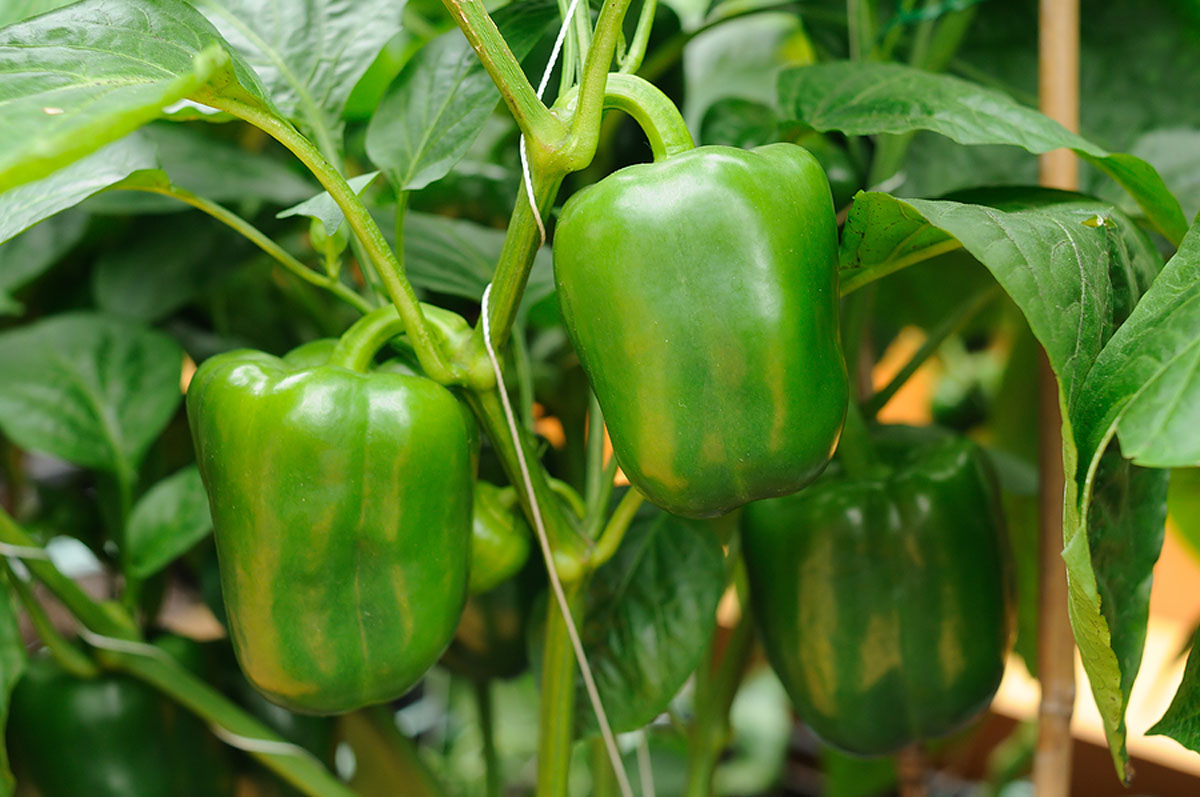
Plant characteristics
Plant Type:
- Vegetables
- Annual
Sunlight Requirements (where to plant related to sun)
- Full Sun
- Full Sun or Partially Shade
- Light Shade
Soil Type (type of soil plant needs)
- Soil with Drainage but Wet
- Wet Soil
Climate Type (how tollerant is to frost?)
- No Frost Tolerant
Fragrant Plant (do flowers have an aroma?)
- No Fragrant Flowers
Difficulty Level (how hard is to cultivate this plant?)
- Easy
Flower Color (what color flowers produces)
- White
Blooming Season (which months blooms)
- June
- July
- August
- September
- October
Showing Season (which months can we sow seeds)
- April
- May
- June
Planting Season (which months can we plant or transplant)
- May
- June
- July
How to grow Peppers
Peppers are a tropical fruit according to botanists. Yes, you read that right. Fruit, not vegetable!
Green, red and orange peppers need a lot of heat to grow. Small hot peppers, perform well even in a relatively cool summer.
Other names for peppers
Latin name: Capsicum annuum, Solanaceae family
Greek name: Πιπεριά (single), Πιπεριές (plural)
For information on growing peppers, please see also the article: How to Grow Peppers – Instructions and Tips.
Tips on how to grow peppers
Starting peppers from seeds
Start peppers from seeds in the seedling nursery. You can plant pepper seeds in a nursery indoors 5 to 8 weeks before the last cold weather.
Place the seeds in a number of cups or small pots. Keep the soil at a temperature of around 27 degrees Celsius until the seeds germinate. It will take 1 to 2 weeks for this to happen. Once the pepper seedlings emerge, the temperature requirements become more flexible.
The temperature that pepper seedlings need during the day is 18-24 degrees Celsius and 16-18 degrees Celsius at night. Avoid the temperature in the evening dropping below 12 degrees Celsius.
Tip: If you don’t have a heated nursery, you can place the seedlings on top of an old refrigerator. The heat generated by the mechanism at the back will keep the pepper seedlings warm.
4 weeks later, you will need to move the seedlings to a cold room for the night. This will allow you to harden them off and prepare them for transplanting into the garden/garden.
Transplanting pepper seedlings
You can transplant the pepper seedlings into the garden/garden in mid-May, early June, or even earlier if local conditions allow. Choose a place in your garden that is sunny and out of the wind.
Best soil for peppers
The soil you plant peppers in should be rich in calcium and phosphorus. Therefore, you should have enriched the soil with a fertilizer containing calcium and phosphorus. You can use compost, manure or other organic fertilizers that you can find commercially.
Irrigation of peppers
The soil should be moist, but be careful not to stagnate the water. The ideal watering is by drip watering.
Harvesting peppers
Peppers are ready to harvest when they are hard and large. But if you wait even longer, the fruit will ripen further and change color to red, yellow, brown or purple. The sweetness and vitamin C content increase dramatically when the pepper changes color.
But if you pick the peppers while they are still green, then the plant will produce more peppers.
The expected production, although this also depends on the variety, is 5-10 large peppers per plant.
